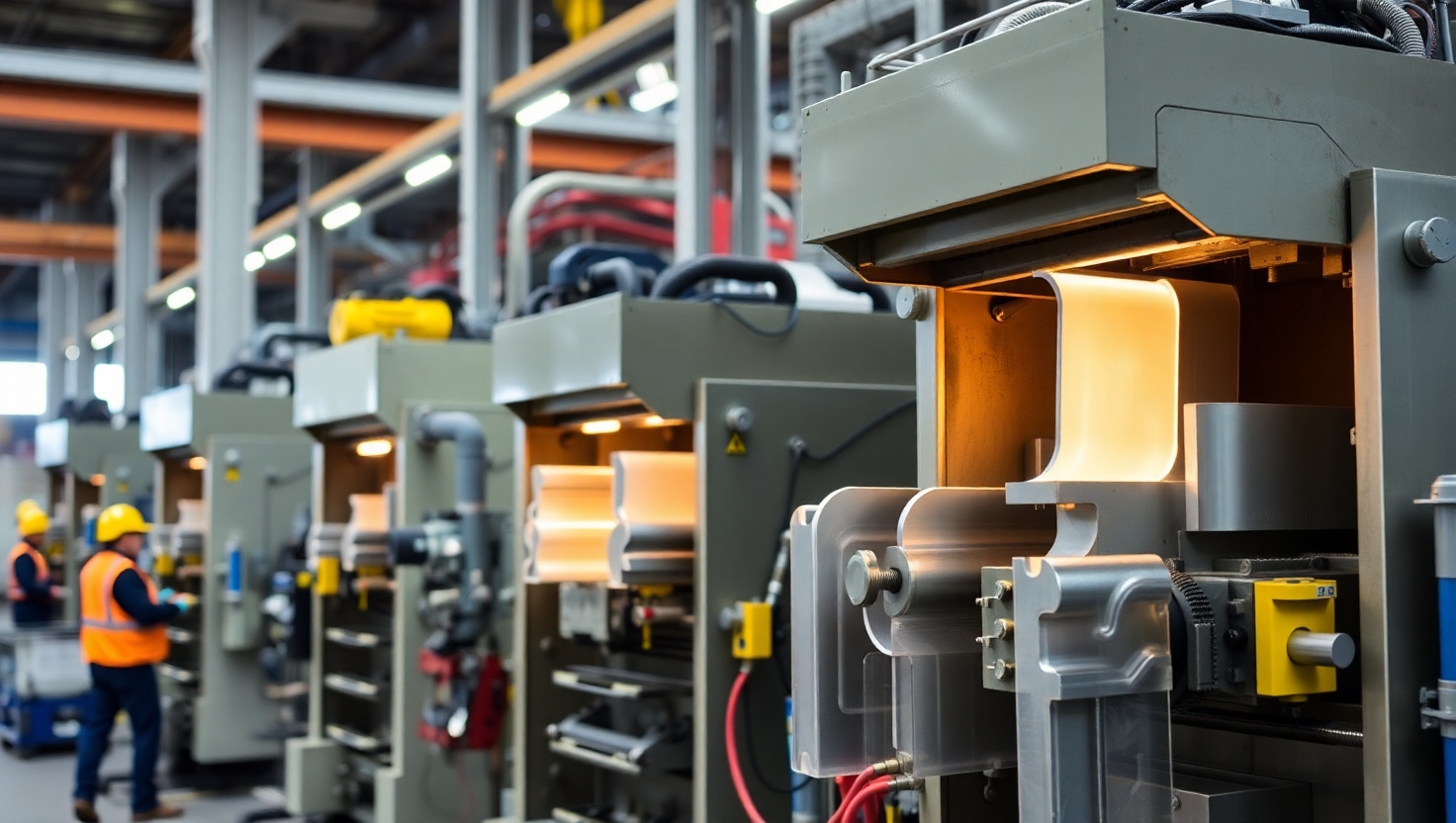How to Choose the Right Extrusion Press for Different Aluminium Profiles
Published by: ALUTimes | Date: July 17, 2025
Table of Contents
- Introduction
- Types of Extrusion Presses
- Profile Design Considerations
- How to Determine Press Tonnage
- Billet Size & Compatibility
- Matching Press to Production Volume
- Alloy and Temper Impact
- Automation & Digital Presses
- Case Study: Mid-size Fabricator
- Quick Checklist for Press Selection
- Disclaimer
Introduction
Aluminium extrusion presses come in various capacities and configurations, and choosing the right one is essential for optimal productivity, product quality, and profitability. Whether you’re manufacturing simple L-shaped channels or complex EV battery trays, selecting the correct press impacts extrusion speed, scrap rate, tool wear, and energy usage.
Types of Extrusion Presses
Extrusion presses are classified primarily by their orientation and mode of operation. The main types include:
- Horizontal Hydraulic Presses: Most common in aluminium extrusion. Press force is applied in a horizontal direction.
- Vertical Presses: Rare in aluminium but used in specialty applications.
- Direct (Forward) Extrusion: Billet and ram move in the same direction. Offers high output but more friction.
- Indirect (Reverse) Extrusion: Die moves toward stationary billet. Lower friction, better surface finish.
Modern plants often use direct horizontal presses ranging from 600 to 10,000 tons, depending on product type.
Profile Design Considerations
The complexity, thickness, and dimensions of the aluminium profile influence the press choice. For example:
- Thin-walled profiles: Require high-speed, precision-controlled presses.
- Hollow profiles: Require bridge or porthole dies and higher press tonnage.
- Architectural shapes: Need excellent dimensional accuracy and finish.
How to Determine Press Tonnage
Press tonnage is the force required to push the billet through the die. It depends on:
- Billet diameter and length
- Alloy type (e.g., 6061 vs 7075)
- Die resistance (complex shapes need more force)
Formula: Tonnage = Billet Area × Flow Stress × Extrusion Ratio × Friction Factor. Consult die engineers for precise calculations.
Billet Size & Compatibility
Billets usually come in standard diameters (4 to 12 inches). Presses are designed for specific billet sizes, and mismatches lead to:
- Material waste
- Inconsistent pressure distribution
- Increased downtime due to die mismatches
Always ensure billet size aligns with press container and tooling setup.
Matching Press to Production Volume
If you’re a job shop with short runs, quick die changeover and automation are priorities. High-volume OEMs require presses with:
- Multi-cavity dies
- Integrated handling systems
- High thermal stability
Choose press systems that scale with your production forecast for 3–5 years.
Alloy and Temper Impact
Some alloys like 7075 require more force and slower speeds. Others like 6063 extrude faster. Press controls must handle these variables, especially if you process multiple alloys:
- Flexible control over ram speed
- Integrated cooling/quenching systems
- Programmable die preheat cycles
Automation & Digital Presses
Smart extrusion presses now offer Industry 4.0 features such as:
- IoT-based press monitoring
- Real-time feedback loops for quality control
- Predictive maintenance schedules
These systems reduce downtime and improve consistency in aluminium extrusion profiles.
Case Study: Mid-size Fabricator
XYZ Extrusions, a mid-size company in India, upgraded from a 900-ton to 1800-ton press in 2024. With this switch, they expanded into EV component manufacturing, doubling revenue in 12 months. The upgrade allowed them to handle larger billets, complex dies, and reduced rejection rates by 18%.
Quick Checklist for Press Selection
- What profile shapes and sizes will you produce?
- What alloys will you use?
- What is your average order volume?
- Do you need flexibility or high output?
- What level of automation is required?
- Are your dies and billets compatible with your press specs?
Disclaimer
This content is for informational purposes only. Always consult with your technical and mechanical press team before upgrading or installing new equipment.

